-
Posts
2,624 -
Joined
-
Last visited
Content Type
Profiles
Forums
Store
Help Articles
Posts posted by Norm Matthews
-
-
Last night I wanted to make a fish stew. (not very easy when you live in north central small town Kansas) Kids wanted tacos. We had tacos. Today I made a compromise. I made my fish stew with fish broth, red wine, tomatoes, onions, garlic, green peppers, shrimp shells, clam broth and scallop broth. I baked the scallops and clams and made Louisiana boiled shrimp. For myself, I put some rice in a bowl, added the individual fish and ladled the fish stock over. I let the kids follow suit or have the shrimp, scallops and clams without the broth, as they chose.
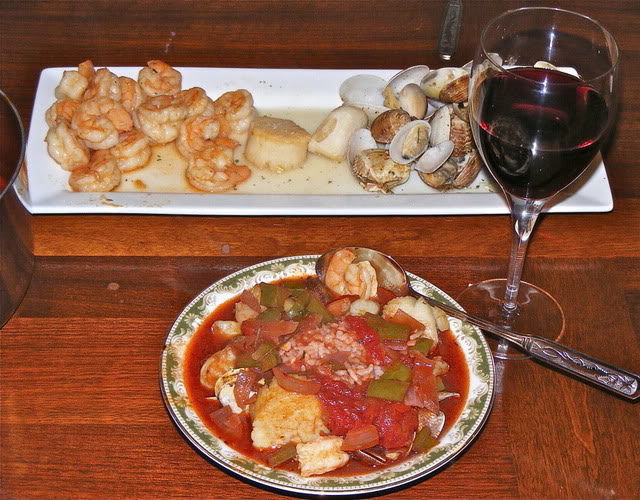
I also made some sourdough French bread. I made two short loaves instead of one long one. I also added and egg and some oil and adjusted the flour accordingly.
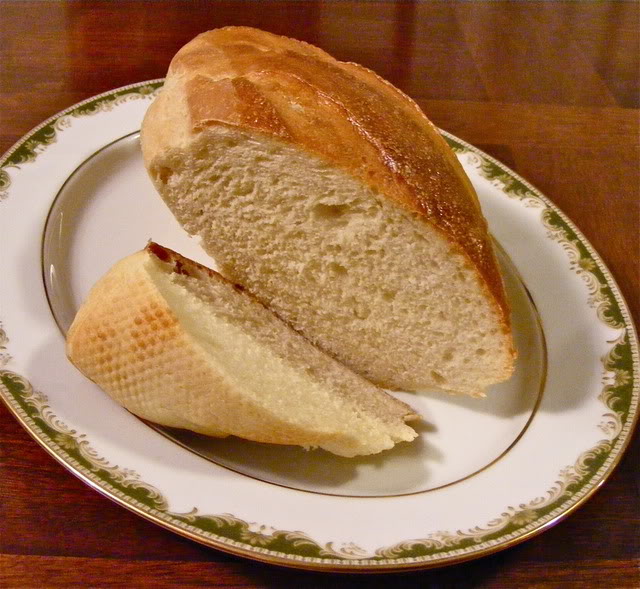
-
The farmer here in Kansas- Lindsborg-. who started the Heritage turkey fad also has began raising Heritage pork. Heritage Foods USA sells Berkshire pork. Another site, http://www.americanberkshire.com/ has recipes for this kind of delicious pork.
http://www.porkbeinspired.com/Recipes.aspx
It isn't a speciality method for raising pigs but rather an old style breed with great flavor.
-
Made Scotch Eggs at son's request for him to take have something to grab and go when he has morning classes.
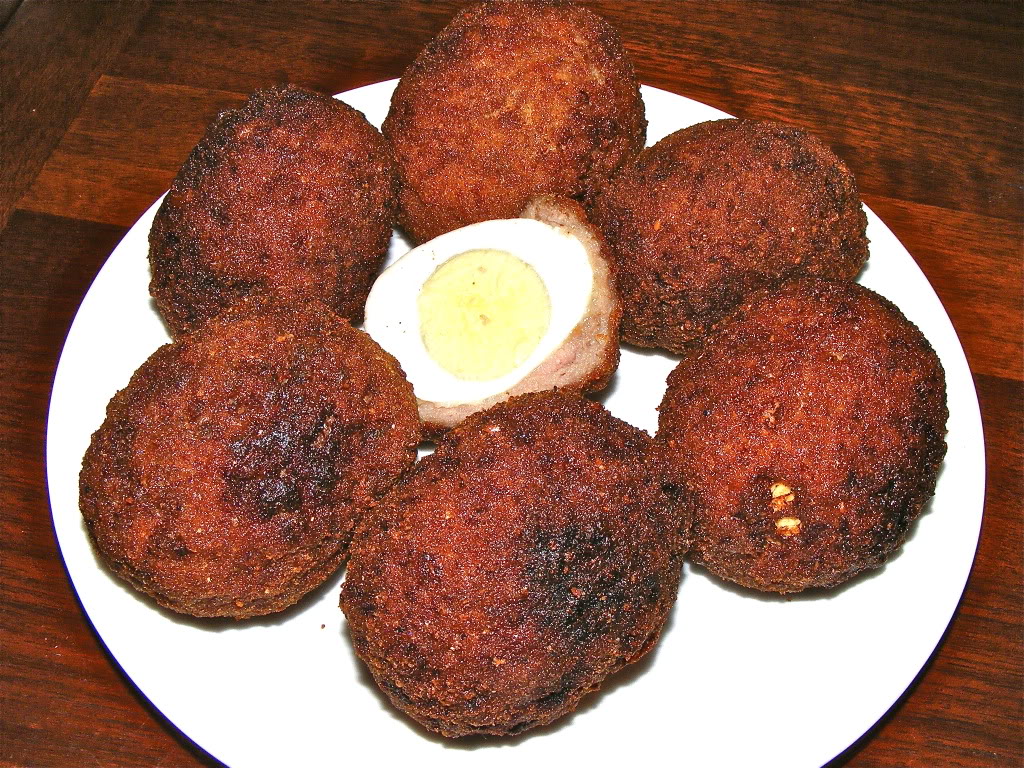
-
Some people think of olden times and think of dull and dreary food, to the dust bowl, bread lines, depression, Van Gogh's Potato Eaters and the Irish famine but early Americans had more variety of food that some imagine. Sure it was regional and seasonal but even in pre Civil War times people knew how to preserve fruits, nuts and vegetables, to cure and dry meats. Books like American Cookery show that food and cooking was not as one dimensional as some might think. There were pigs, deer, rabbits, squirrels and numerous other varmints not to mention a lot of fresh water fish, turtles, frogs and crawdads and chicken, duck, geese, pheasant, dove and quail. I am sure there were women who wished they didn't have to work so hard and saw cooking as just another responsibility just as there were men who day dreamed that they didn't have to toil from morning to night to provide for the family and there were people who took pride in what they did and wanted to do it well.
Of course they were constrained by their "lack knowledge of foodways outside of their experience". What use would they have for knowledge of which they would never come in contact? The people who did the food preparation knew what they needed to know , just as others know in other cultures such as China, Japan, Greece, Italy, Russia.
-
I don't think the refrigerator killed cooking. It promoted it. It kept bacon, eggs, milk and beef and chicken fresher longer for city folk. Early refrigerator freezers were just about big enough to keep a couple of ice cube trays. Frozen food, meat lockers and super markets, and urbanization, plus bigger refrigerator freezers made it possible to manufacture and sell pre made meals, then came mixes. People no longer grew 'victory gardens' or put up their own food in jars nor had fruit cellars.
And this is why I think refrigeration led to the downfall of cooking skills. The lack of a garden (victory or otherwise) distanced the US consumer from the food they ate. People no longer think about where their food comes from. It comes from a plastic-wrapped styrofoam package, of course!
And while lobster could now be sold in Kansas City, refrigeration also contributed greatly to the industrialization of agriculture.
Not that I'm saying refrigeration is a bad thing, mind you. I'm not about to give up my refrigerators and freezers. But if you want one invention that was the beginning of the end, I'd say that's the one. Everything else hinges on the ability to store food for long periods of time.
IMHO Canned goods pre dated refrigeration. Refrigerators were around since the 1920/s Industrialization is what distanced people from farms and back yard gardens. Refrigeration brought farm foods albeit industrial farm foods to the cities. I still think large freezing capacity is more of the culprit. That was in the late 40's, early 50's. By the early 60's people like James Beard and Julia Child had started re awakening people to good and properly cooked home made food by passing up the frozen TV dinners and using fresh super market food because that was what most people had available by then.
-
I don't think the refrigerator killed cooking. It promoted it. It kept bacon, eggs, milk and beef and chicken fresher longer for city folk. Early refrigerator freezers were just about big enough to keep a couple of ice cube trays. Frozen food, meat lockers and super markets, and urbanization, plus bigger refrigerator freezers made it possible to manufacture and sell pre made meals, then came mixes. People no longer grew 'victory gardens' or put up their own food in jars nor had fruit cellars.
-
Historically speaking, I'd think TV Dinners played a significant roll in killing old time cooking.
-
Using up the last of the chicken left from the last few meals, I made martini style chicken breasts with Sugo alla Puttanesca
-
Yesterdays pork dumpling soup is todays chicken mushroom soup. All the pork dumplings are gone but broth remains. I added some more chicken meat, mushrooms, onion, bok choy stems and Creole seasoning.
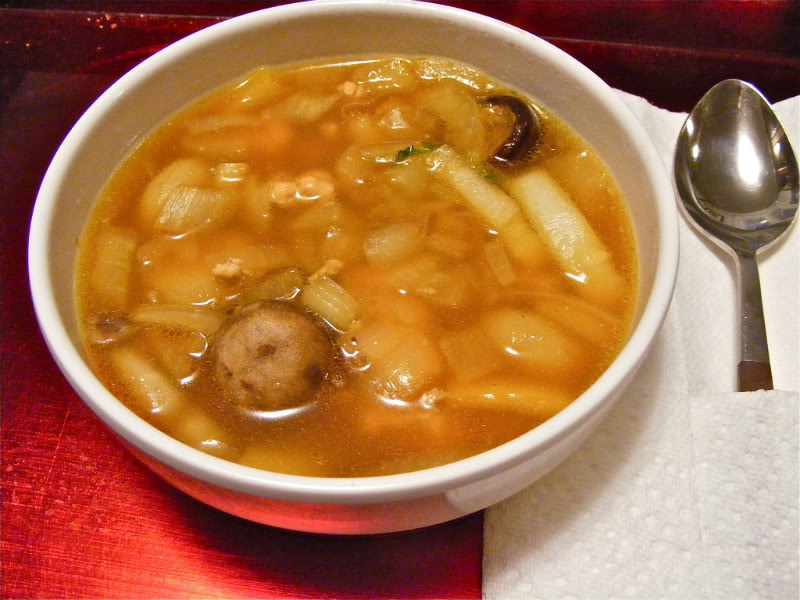
-
I know that the hydrometer is calibrated to be accurate at (I think) 70ºF and my experiment did not by any means attempt to be scientific but I would suspect that since it does roughly measure alcoholic content that there should me some kind of rough correlation.
It also seems to me that USDA numbers are misleading by quoting alcohol by percentage of itself instead of talking about amount by volume. If you add a tablespoon of wine at 12.5 percent alcohol to a cup of liquid, you have automatically reduced the amount by volume by 16 times. USDA seems to consider that to be 100 percent alcohol but even if it isn't heated the amount of alcohol in a cup of chicken broth is now 1.56% by volume. See what I mean? Even if my math figures are not accurate, the amount of alcohol by volume is reduced greatly. If a cup of sauce is a serving for 4, that is now less that 0.4% per serving by volume even though it is still 100 % alcohol. Heating it may reduce the alcohol by only 25% that is now 75% of the alcohol remaining but it is also now .3 by volume. Unless I am mistaken, that is legally considered non-alcoholic.
If my thinking is out of line, I'd like someone to explain it to me.
-
Water will carry flavors such as in making soup or coffee, Fat carries flavors that water won't which is one reason why fried food tastes different than boiled foods and alcohol brings out flavors that neither of the other two will which is one of the reasons why the flavor changes when heating alcohol with food.
I know about the USDA report on alcohol but I'd like someone to explain why an experiment I did apparently show different results. I found a hydrometer in an antique store and thought it was calibrated to measure sugar levels as for determining how alcoholic grape juice should be after fermenting. When I got it home I discovered it was a customs house hydrometer that was calibrated to measure alcohol content of a liquid. Out of curiosity I measured brandy and it showed 70 proof. After adding two parts water as one might to when adding alcohol to a sauce, it measured 20 proof and then after only simmering for three minutes, it measured no alcohol.
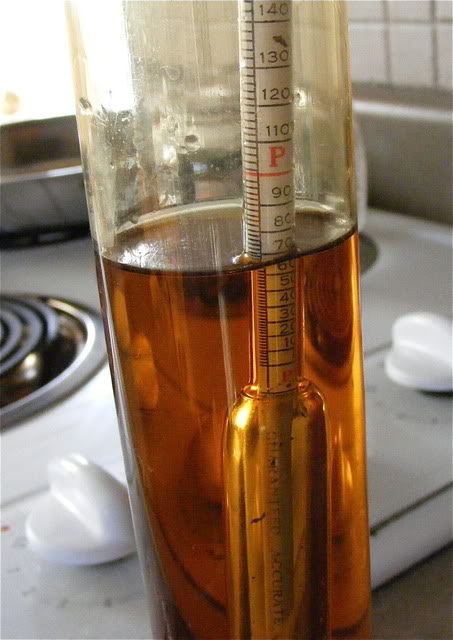
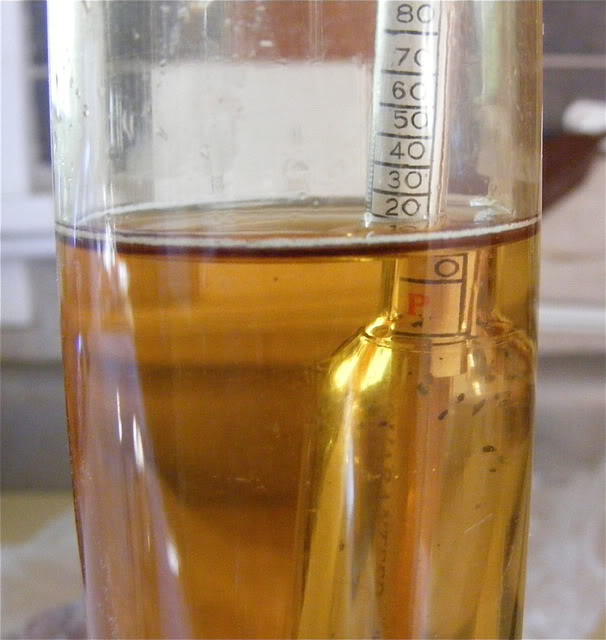

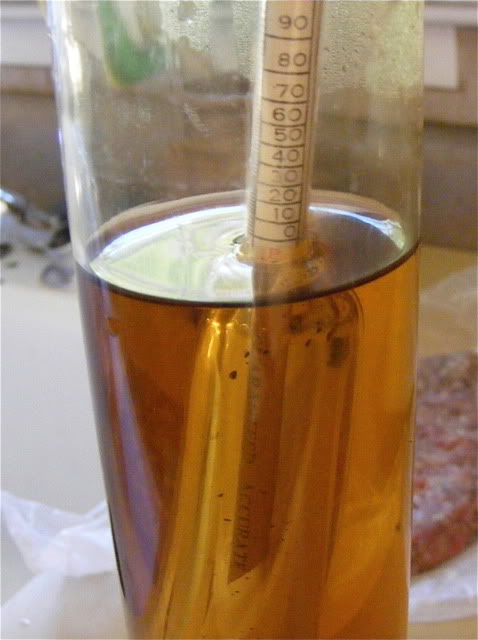
-
Thanks for the comments everyone. SobaAddict, that looks so good. I think I'd have to feel un-virtuous and add some kind of smoked sausage though. LOL
-
Here are some shots of dinner tonight

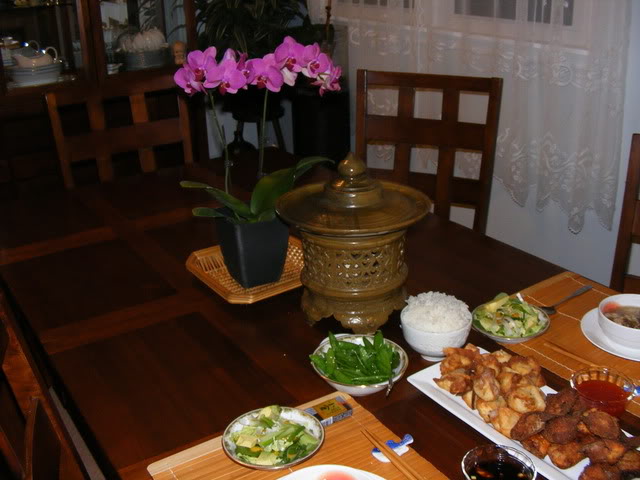
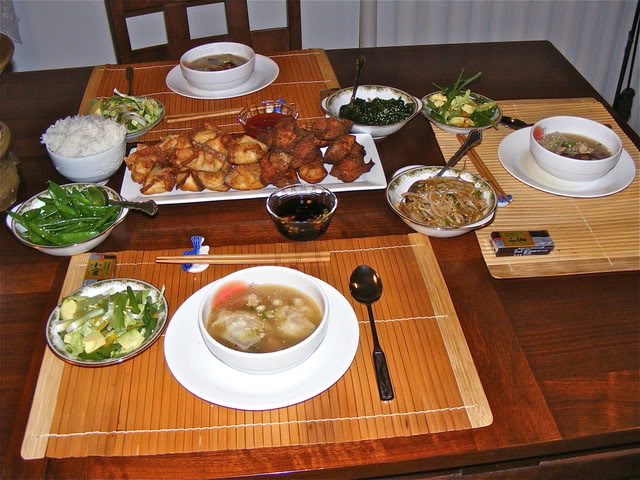
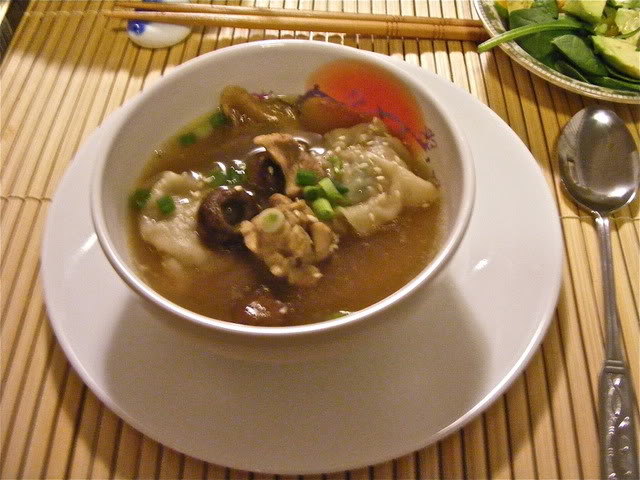
-
I am putting together dinner for tonight, around 8pm. Believe me I did not realize today was Chinese New Years either so the Asian foods I planned are purely by coincidence. I am not even sure most of this isn't Japanese and Korean anyway.
Someone on another site posted a recipe for pork dumpling soup and the filling reminded me of what my former MIL put in her Yaki Mandu ( fried won tons) So I decided to give it a try but hold some back to fry. It has shrimp, pork and mushrooms in it. I also made some crab rangoon that actually has crab meat in it. I had planned to make this for a few days but today was the day we all were going to be here at dinner time.
I picked up some Japanese candy for dessert and will do a Korean Spinach dish, bean sprouts and snow peas. Maybe a salad too. Still fluid on the whole final meal.
I'll try to post some pictures later.
-
My theory ( this is home cooking in cast iron chicken fryer on an electric stove) is that for the first fry, the hand cut raw potatoes go in at about 350º, the temperature drops to 330º or so and raise slowly while they cook through in seven or eight minutes. On the second fry the warm pre-cooked potatoes goes in the oil at the higher temp. of around 370-380º and the temp. does not drop significantly and they get fried brown and crisp on the outside in a minute or less. I suppose less water, oil on the surface of the potato, warmer temperature of the potatoes and higher temperature of the oil all combine to finish cooking the potatoes so they are soft and done inside and crispy outside. They'd burn or be raw in the middle if only cooked once at the higher temperature.
edit:From the link mentioned above, all this apparently happens easier if the oil has been 'tempered' with some old oil however.
-
The link posted by djyee100 about keeping some old oil for better browning was very interesting and informative. When I use oil for deep frying, I let it cool and settle out, pour off the clear and save it for reuse, then refresh it with new oil so I use some old oil about 70% or more of the time. I thought I was just being thrifty but apparently it is more efficient too. Still when I do french fries, I don't get a good crisp brown until the batch goes in for a second time at about 30 degrees hotter than the first time. That is why I wonder if using new oil is really the reason fries are 'double dipped' so they can brown on the second time in.
-
That is an interesting theory about fries but I am not sure it is entirely correct. When I do potatoes in deep oil, they don't brown on the first time in even if the oil has been used before. Fries are fried at a lower temperature to cook them through, then on the second time, the heat is raised to brown them on the outside while the inside stays creamy. Every time you use oil for frying, the smoke point drops somewhat. Once it starts smoking at cooking temperature, it is time to change the oil.
When one is sautéing, as Alcuin states, it helps to release what is cooking and little oil is used so that when done, the oil is discarded and not used again so smoke isn't an issue. Some oil may be retained in the pan while it's deglazed for making a sauce though.
The thing about smoking oil is that it has just started to break down and if you keep it, it is open for oxidation which is when the oil is no longer safe or good to use anymore.
-
Oil does start to break down when it starts to smoke but when you cook like that, you are sautéing or pan frying and not going to use the oil again, so it's not going to make a difference, especially if you start cooking immediately at that point. Those instructions expect that you will be using common vegetable oils that smoke right around 400º. Oil used for deep frying should not be heated that hot, especially if you are planning to use it again a few times. Non stick pans usually don't hold up very well over the long term if they are heated that much. Cast iron will take longer to heat up but hold the heat longer. Tri clan steel will heat up quickly and care should be taken that it does not over-heat the oil and itself.
highly flavored oils break down and loose distinctive flavor characteristics when used at the smoke point so consider using relatively neutral flavored oils for this technique. extra virgin olive oil is expensive for using with this method. Use regular olive oil if you use olive oil at all.
-
Here is my recipe which I have added and taken from for 30+ years and it is pretty well set now. I also have a recipe for Mexican roast beef that can be shredded and used instead of hamburger if one really wants to go to that much effort.
Norm's Chili
1 lb hamburger
1 lb. chorizo,
1 onion, finely chopped
8 oz tomato sauce
1 Tbs. sugar
1 to 3 Tbs. chili powder according to preference
1 ounce red wine vinegar
1/2 C. picante sauce
1 bay leaf
1/2 to 1 tsp. salt
1 T. paprika
optional 1 can red beans, not drained
1/2 tsp. pepper
1/4 tsp. cumin
1/4 tsp. cayenne
1/2 bottle beer
1-2 ounces cocoa powder
dash or two Tabasco
Saute meat, when almost done, add onions and garlic. When onions are tender, add rest or ingredients. Cover and simmer 1 hour. Remove lid and let cook down if necessary. Refrigerate overnight and remove fat and reheat.
Note: if desired....
If cooked without beans, serve them and grated raw onion on the side as a garnish.
Chili toppings for chili bar with guests. Pick and choose from the following
soda crackers,
corn chips
thin sliced radishes
thinly sliced green onions
sour cream
diced fresh jalapeno
green olives, halved
chopped white onions,
small dice tomato
fresh lime wedges
grated cheddar cheese
salsas/pico de galo
grated monterey jack
diced avocados
pinto beans
shaker bottle of red pepper flakes
tosted baguette slices
Tabasco sauce
cilantro leaves
I don't usually put cheese on my chili but did for this picture.
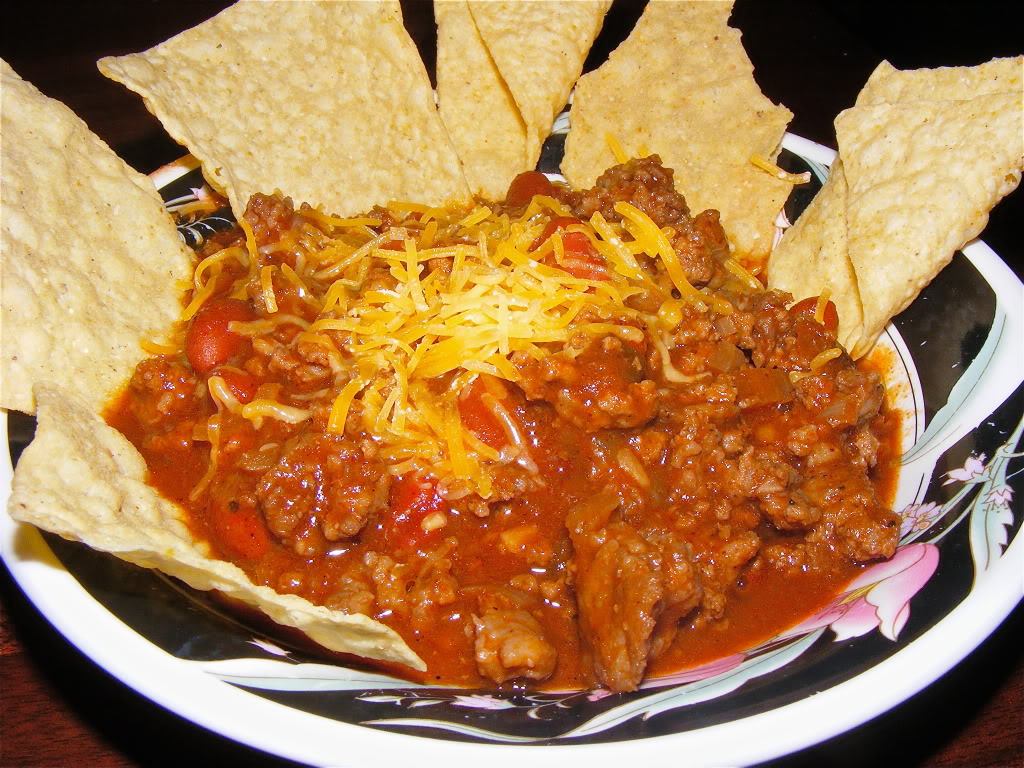
-
 1
1
-
-
Dinner tonight was pan fried pork chops smothered in a sauce of chicken broth, cherry juice, craisins, celery, onions and mushrooms and potato cakes. We had kraut but no one wanted any.
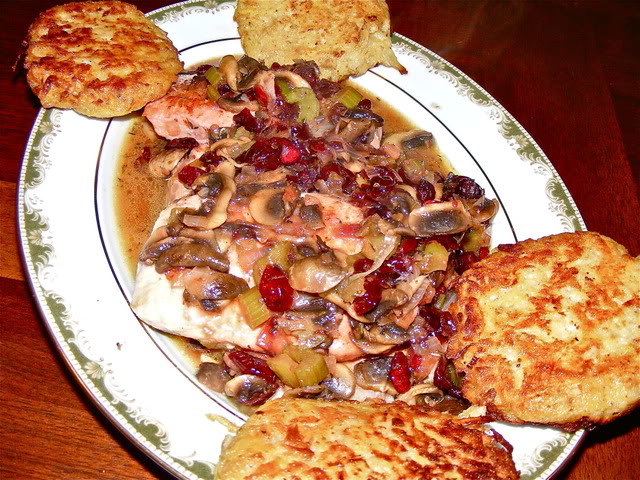
-
The store had boneless, skinless chicken thighs so that made this dish a lot easier for me. I didn't have to get a couple of chickens and bone and skin them myself, but when I got home I discovered I didn't have jalapenos- used chili powder and pepper sauce. Doubled sauce recipe and added a dash of sesame oil cut back on ginger. Charlie noticed the missing jalapeno. This dish was concocted when we went to a Chinese buffet and son asked me to try to duplicate it. I was a little lazy and cut the pieces big and that meant they had to cook longer and got browner that usual but they were crispy and moist and not burnt. Vegetables were steamed then tossed in a sauce made with hoisin, soy, chicken broth and corn starch.
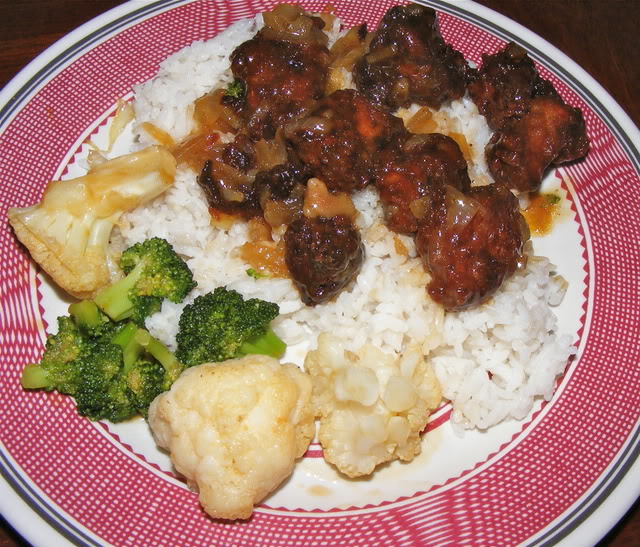
-
I made chicken vegetable soup with chicken bones and parts not used for the chicken parmesan the other day.
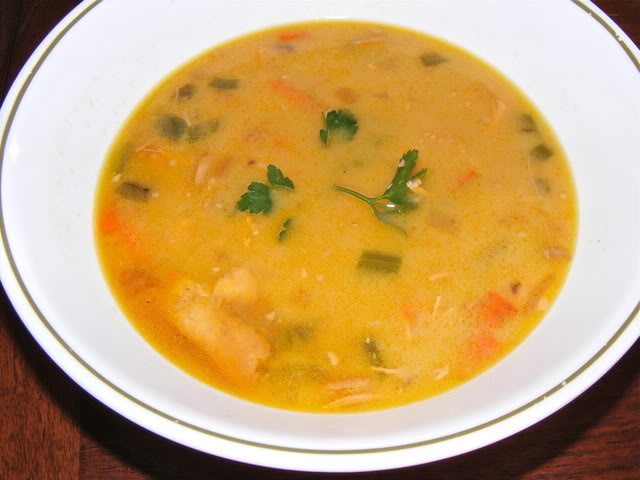
-
In my HUMBLE opinion, ribs that have been done to fall-off-the-bone tenderness are over-cooked. They should have some tooth pull and chewy-ness in order to be perfect as those appear to be.
-
Beef ribs, with Korean galbi marinade (pear juice, honey, black pepper, soy sauce, sesame oil) with cauliflower puree, glazed carrots and sauteed spinach.
Cooked the ribs sous vide for 48 hours and then finished in a hot pan. They were very nice, maybe not quite as meltingly tender as anticipated, but that was likely operator error.
It looks wonderful. I doubt any lack of tenderness was due to 'operator error'. They look about as perfect as 'humanly' possible.



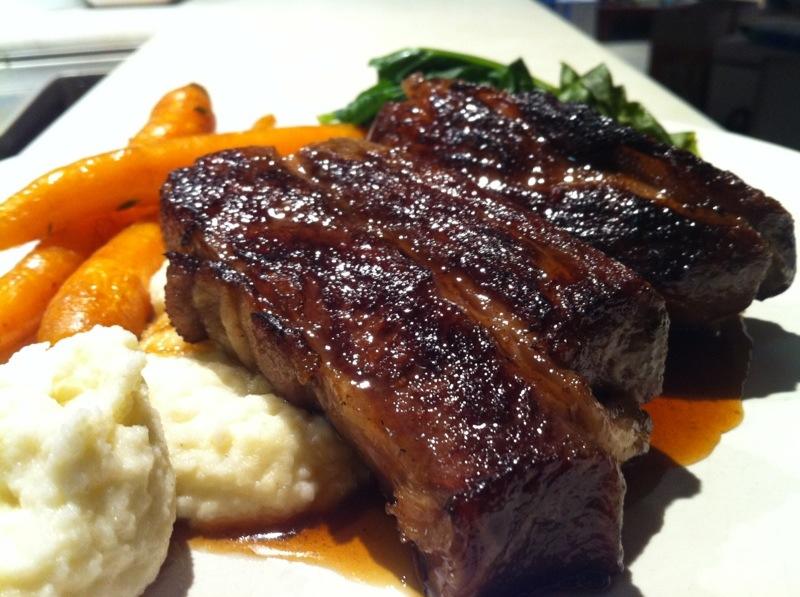
Veal stock specified – substitute commercial beef stock or home-made?
in Cooking
Posted
Mixing chicken and beef stock half and half is a decent substitution.